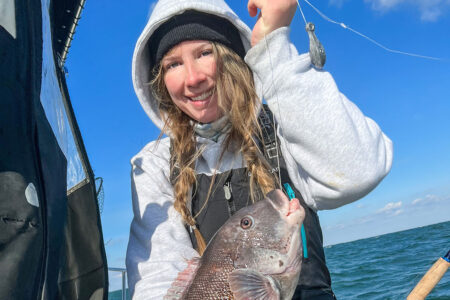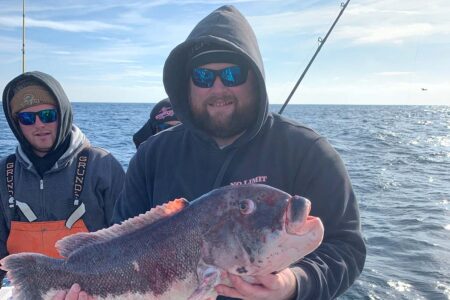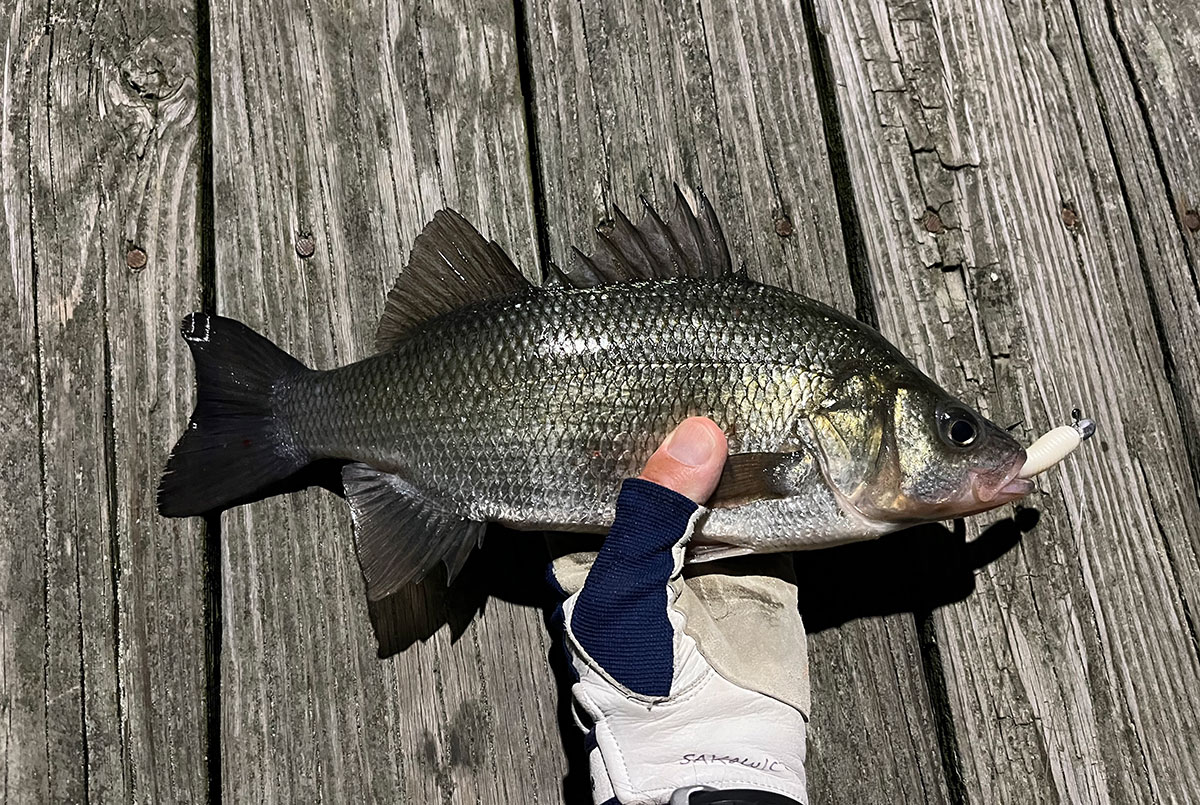
South Jersey’s best kept back bay secret.
Unless you’re hitting the head boats this month in search of tautog (or hopefully porgies at some point), white perch is about the best option in the “salt” this month, even if you’re heading up into brackish waters.
Of course, that’s not the only time to fish for white perch in the Garden State. Whenever there is a lull in the spring fluke fishing or striped bass season has come and gone in the fall, folks with the fever looking for other ways to entertain themselves with a rod and reel can always turn to the perch. That said, from late into winter and then early spring from the time of the spawn, April to June, are some of the very best times to search for this local panfish.
Although sometimes finding good numbers can be a bit of a chore, once you’ve found them, you’re likely to have found them all.
Where To Look
White perch travel in schools and are almost always found in the back marshes where creeks run through. There are likely better numbers of perch to be found where a freshwater system dumps out into the marshes or rivers, and these fish are privy to brackish water, much like herring.
Perch also congregate on a bend in the creek where water funnels out more quickly, as they are there feeding on grass shrimp and small minnows that wash through with the tides. Lagoons with lots of bulkheads are another place where perch will congregate, again hitting up the bulkheads for grass shrimp. Bridge abutments along the inland parts of South Jersey also hold good perch; pretty much anywhere that grass shrimp are clinging to structure is where perch can likely be found. However, social media and tackle store info is how most people find perch nowadays; most tackle shops will show you where the perch are, and when you get there, you’ll know because folks will line the banks and load up.
Catching them doesn’t take rocket science, so to speak, and those who target perch get the benefit of a really nice-eating fish. White perch are indeed a smaller fish, and many folks don’t care to fillet them as they can be a chore to clean, but a good load of perch on the table is a good change. Kids and adults alike will relish a good day of perch fishing as they are aggressive and fight a good fight for their size, and filling a bucket doesn’t take long once you’re dialed in on them.
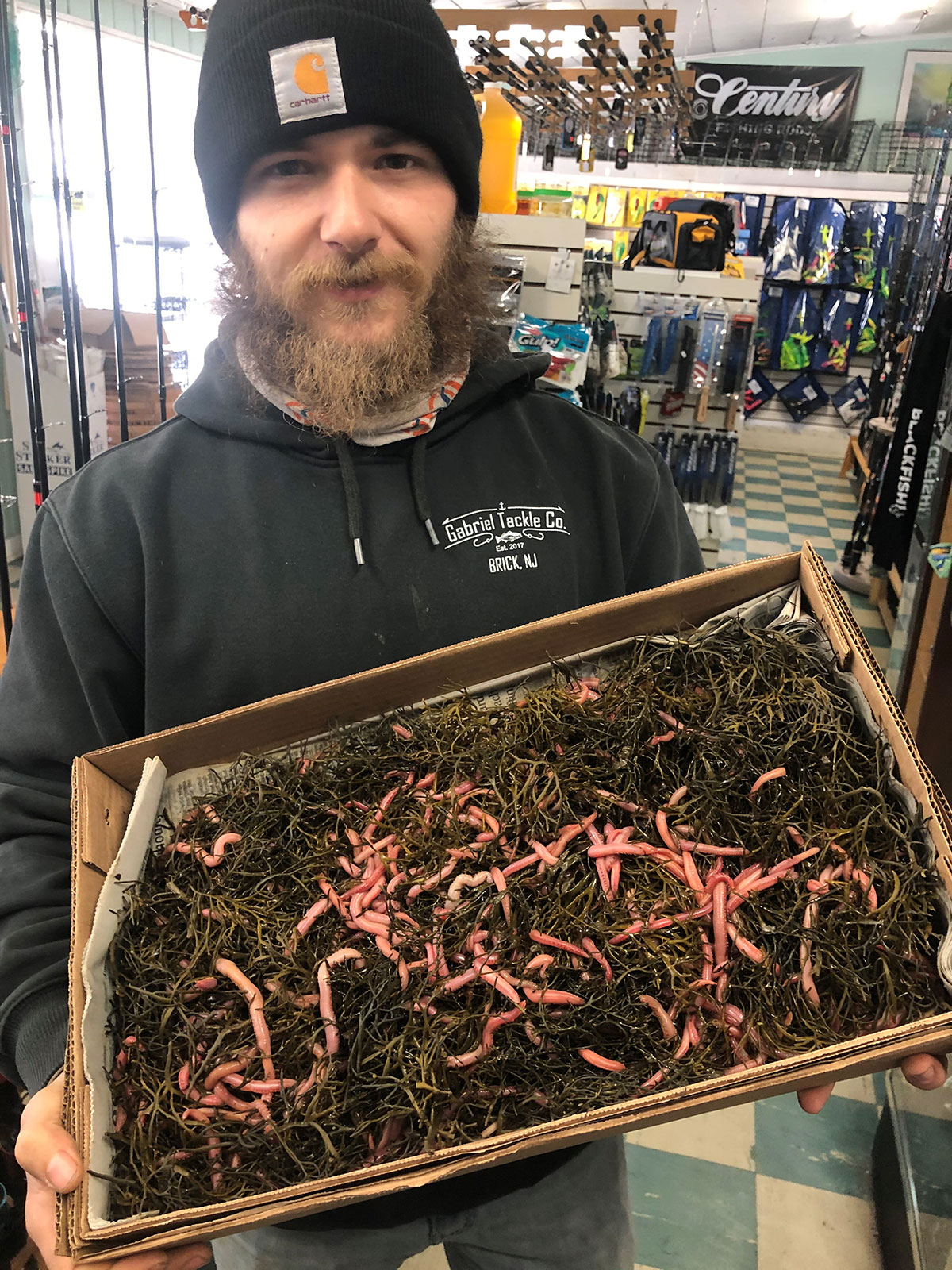
When & How
The trick to finding good perch numbers is moving around a bit and fishing the right feed times; for me high tides at dusk have always been the best times to catch perch on a wild feed. A high tide running out presents a good current back in the marsh creeks, and shrimp and small minnows are a perch’s main diet. Most experienced perch guys will have a mess of live shrimp with them, and sometimes these perch sharpies will have small live minnows as well; larger perch can respond to small minnows better than grass shrimp, giving the angler the ability to release those smaller unwanted fish.
On many occasions white perch are caught in winter and bloodworms are the only available bait, and perch will respond to them as food sources are limited. Small spinners are also good for catching a few perch, but live bait has always been my go-to. In past years anglers have had a great time ice fishing for white perch in Atlantic County’s Collins Cove, which was a popular ice fishing spot for many years. Though the ice-ups in the Mullica River have become few and far between in recent years, folks still fish the cove for good numbers of large perch.
While perch can be found throughout the region – from up along the Hackensack and Raritan in North Jersey, down along the tidal tributaries and nearshore waters of the Delaware – Atlantic County’s waters have always held good perch, and the bridges and marshes along Route 30 are also popular spots to find some perch relatively easy. As a young boy, I used to meet up with my friends and we always fished in the Toms River in spring and fall. Good numbers of perch still frequent the river, and I still catch nice-sized perch up there.
Those tackle shops that are close to perch spots and remain open through these colder winter months will know where they are, and Capt. Dave at Absecon Bay Sportsmen’s Center (609-484-0409) and Dennis from Hook House Bait and Tackle in Toms River (732-270-3856) are a couple of shop owners who know their perch fishing and can point you in the right direction. Up north, you can also try Akira at True World Tackle in Bayonne (201-339-2628) or Steve at Up Front Bait and Tackle in Keyport (732-497-0919).
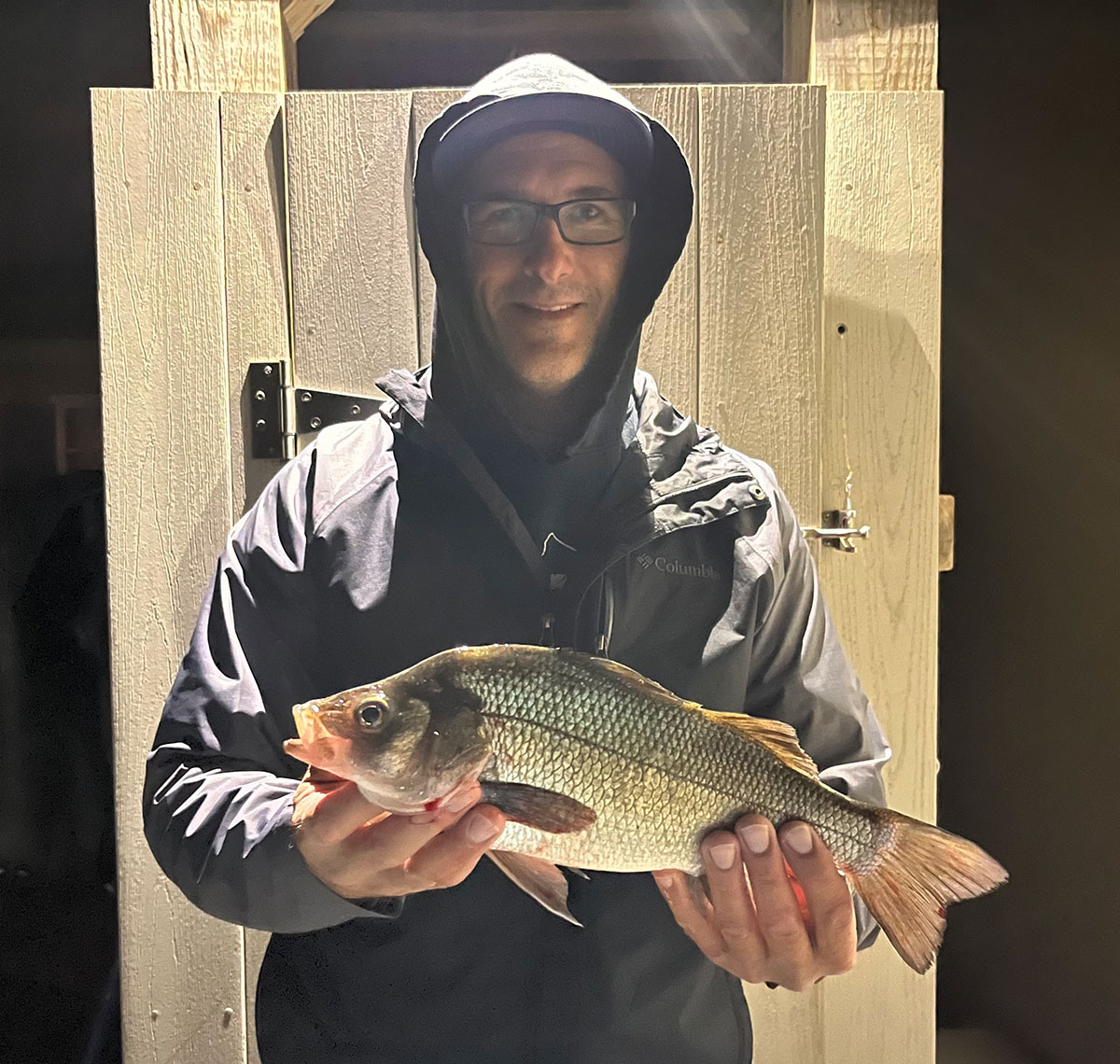
All Geared Up
Once you’ve found yourself a potential perch hole, a small rod and reel is all that’s needed. I like a 6- to 7-foot rod with medium heavy action, and a small reel like a 3000 or 4000 series; Shimano Stradics are ideal for this type of fishing, though any small reel will do. I do use braided 30-pound line, this just in case a bigger fish like a striped bass finds my bait (catch and release only of course until March 1). The rig used is typically just a float (I like a weighted float for ultimate casting ability) with a small hook, a number 4 or 6, and I use a baitholder hook to hold those grass shrimp on.
| NJDFW GENERAL FACTS |
| According to the New Jersey Division of Fish & Wildlife (NJDFW), white perch are considered omnivores, with feeding behavior closely associated with whatever forage is available in large quantities. Found in estuaries, rivers and lakes, white perch are an open water species that seldom ventures into shallow water. “Early spring is the most productive time to catch white perch,” the state fisheries agency advises, adding “at this time white perch are tightly schooled and ravenous.”
White perch can be caught in the Delaware River and its lower tributaries, such as Crosswicks, Rancocas, Cooper, Big Timber and Mantua Creeks. Additionally, coastal rivers such as the Raritan, Mullica and Great Egg Harbor River, and deeper lakes and reservoirs, possess excellent white perch populations. Artificial baits, such as spinners, minnow imitators and jigs, can be equally as productive as live bait if fished properly. New Jersey’s state record freshwater white perch stands at 3 pounds, 1 ounce for Edward Tango in Forest Hill Park Lake back in 1989. On the saltwater side, Mickey King’s 2-pound, 12-ounce white perch from Little Beach Creek in 1998 is still tops on the New Jersey State Record Saltwater Fish board. |
I prefer to fish at least 3 to 4 feet below the surface of the water, as bigger perch tend to lay a little deeper. Once the action becomes fast and furious, I always put a quarter-ounce split-shot 3 or 4 inches above my hook to send the bait down quickly and to keep it from floating up top. But again, once you’ve found large numbers of fish, the bite is aggressive, usually shutting off right at dusk.
Catching a good load of perch means a little bit of work; they are a tad bit bony, and filleting takes some finesse. You can also just scale and gut perch and cook them whole. I always tried to only take the bigger perch, and it’s actually hard to not throw some smaller ones into the bucket in the beginning of your trip. Their meat is white and tastes great, but perch don’t typically freeze very well as fillets; my wife will cook the perch and make some fish cakes and freeze them for another day. Already cooked perch freeze much better but eating them fresh is the best way. Breaded or oven cooked perch fillets are certain to satisfy any angler in the colder months, while we shake off that cabin fever.
There’s no need to just sit and stare at those rods in the corner this month; there are schools of white perch out there to be caught, and a nice warm meal of silver-sided beauties is a great way to shake off the winter doldrums and get you through the colder months.
Good luck and great fishing.


